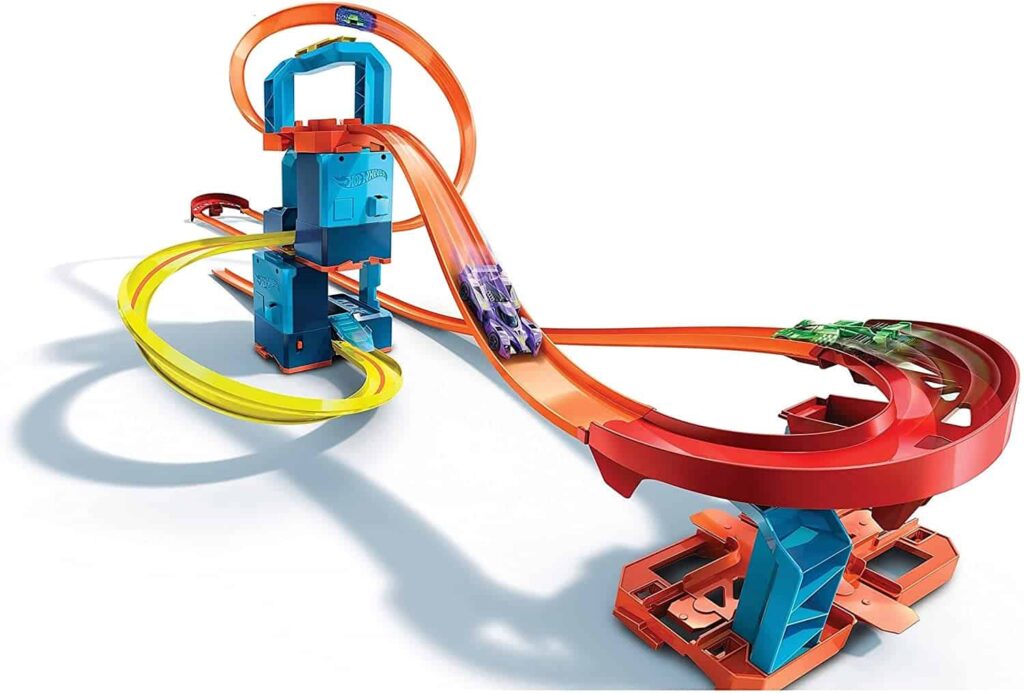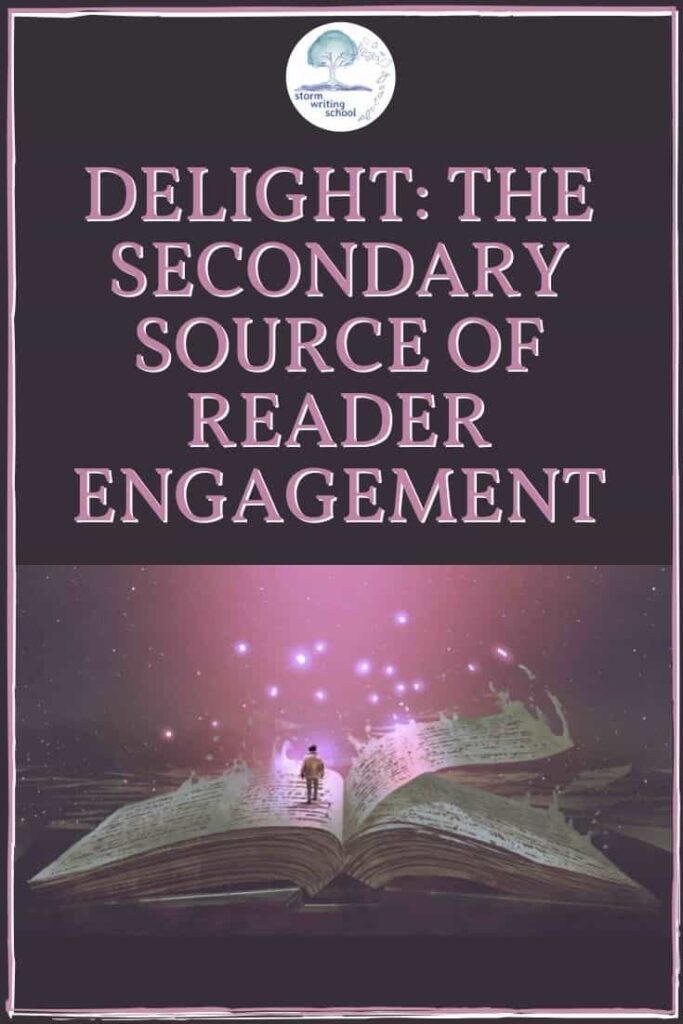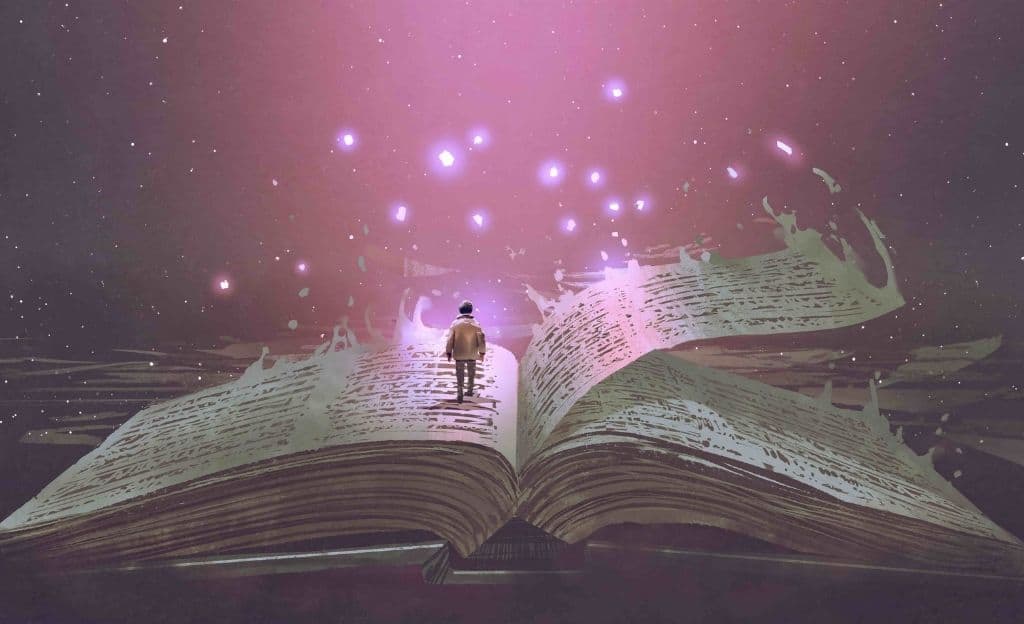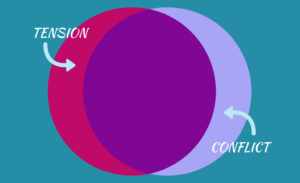This past December, I stumbled upon a bit of synchronicity. My son got a Hot Wheels track for Christmas, and I got George Saunders’ book A Swim in a Pond in the Rain. One day, as I was watching the boy send a car around the loop he’d created, I came upon a Saunders analogy to Hot Wheels cars, of all things:
When I was a kid I had this Hot Wheels set: lengths of plastic tracks, metal cards, a couple of battery-powered plastic “gas stations.” Inside each station was a pair of spinning rubber wheels. The little car went in, then got shot out on the other side. If you arranged the gas stations right, you could urge a little car into one as you left for school and come back hours later to find the car still going around the track.
The reader is the little car. The writer’s task is to place gas stations around the track so that the reader will keep reading and make it to the end of the story.
Indeed, my son had these “gas stations,” as Saunders calls them—boosters in Hot Wheels parlance—and though they ate through batteries pretty quickly, they could keep a good car going for a long while. (Certainly long enough for me.)

Two Types of Gas Station
So I got to pondering what kinds of gas stations keep a reader reading. I think it mostly comes down to one of two broad categories. The first is tension, which I define as “the anxiety that results from a lack of resolution.” I maintain that tension is the primary driver for reader engagement. Some tension is rooted in mystery and intrigue; some is rooted in conflict; and some is rooted in anticipation of change or consequence.
But there’s a second broad category of gas stations based in an emotion quite different from tension. I call this second category “delight.” And delight equates to a small jolt of energy that results from joy taken in the written word.
“Joy” is a perhaps a misleading word to use here because, as we’ll see, the emotional response to the writing is not always happiness. Hence the term “delight.”
There are a few sources of this delight.

Truth
Perhaps the most apparent form of delight comes when the writer has articulated something that resonates with the reader. This happens when a sentence or a situation spurs the reader to think, “Hmm. That’s right, isn’t it?”
Take the editorial narrator in John Steinbeck’s novel Tortilla Flat, who at one point observes, “Ah, the prayers of the millions, how they must fight and destroy each other on their way to the throne of God.” Later, the narrator addresses the main character, Danny, directly: “Thy life is not thine own to govern, Danny, for it controls other lives. See how thy friends suffer! Spring to life, Danny, that thy friends may live again!” I read Tortilla Flat about 25 years ago, and though I had to look up the exact phrasing of those lines, their concepts stuck with me.
Poetry
Often, though, truth is coupled with some unforgettable phrasing. When I talk about poetry in a passage of prose, I don’t mean verse. I mean either 1) some phrasing that is clever or truthful while also being musical, or 2) an especially lucid comparison. Musicality and metaphor, to keep it simple and alliterative.
Music
There’s a passage in Madeline Miller’s Circe that sang to me the first time I read it and once again caught my attention on my recent second read. After learning of Icarus’s death, Circe narrates, “I mourned that sweet boy’s death, but I mourned more for Daedalus, winging doggedly onwards, dragging that desperate grief behind him.“
This passage is a wonderful example of the first kind of poetry. It articulates a truth—the fact that the grieving survivor has to move doggedly onwards—while also giving us music in the alliterative D’s and consonant G’s. It’s not just that the sound are repeated; it’s that they reinforce the meaning of the sentence. D sounds often connote death and dying and things that are done; the past tense ends in D. And the G sounds often connote a sort of emotional weight that grinds and drags.
Metaphor
But I see poetry, too, in metaphor and symbolism. The reader delights in recognizing the familiar amidst the unfamiliar. So when Karen Russell writes in her short story, “Haunting Olivia,” about a ghost plesiosaur that the protagonist views through magic snorkeling goggles as he searches for the ghost of his sister, we’re primed for a very strange experience, but when he encounters the plesiosaur, he tries to “swim out of its path, but the thing’s too big to avoid. That Leviathan fin, it shivers right through me. It’s a light in my belly, cold and familiar. And I flash back to a snippet from school, a line from a poem or some science book, I can’t remember which: There are certain prehistoric things that swim beyond extinction.”
There’s so much truth there to unpack, but I would argue that the reader feels the truth even before it becomes conscious. And therein lies the delight. We can look at it again and try to suss out what truths we’re feeling—the leviathan of grief, unavoidable and huge; the sister, now extinct, swimming somewhere beyond extinction in the protagonist’s memory—but the metaphor doesn’t need explanation in order to resonate with a reader and cause a little jolt of delight.
Humor
I have used relatively morbid examples thus far, proving that delight is not always rooted in smiles and laughter. But it certainly can be rooted in such things.
Jack Handey’s novel, The Stench of Honolulu, is not an especially well-written book, nor is it a superb story. But it injects humor multiple times a page and is thus propelled forward almost exclusively by the its humor. Here’s a relatively random passage:
Don introduced me to the crew. First, there was Frenchy, the wily old veteran. He knew the river like the back of his hand.
Then there was Peleke. He was young, brash, and cocky. But if you were in a tough situation, he’s who you wanted by your side.
Pip was always making us laugh. But there seemed to be something a little sad about him.
Next there were the twins, Greg and Greg Jr. Or maybe they were father and son, I’m not sure. But you could count on them to keep the engine running smoothly.
Finally, there was Chicken Skin. I don’t remember much about him.
I’ve noticed that my children, who binge middle-grade series, recite humorous lines from Rick Riordan and Tui Sutherland novels all day. There’s no better gateway to reading than a book with humor.
Vicariousness
And lastly, I see a form of delight accompany vicariousness. There are a few forms of vicariousness. I see it most often with setting and character: when the story immerses me in a setting I want to inhabit or when it presents me with a character I want to be like.
Setting
Film and video storytelling provide an immediacy for vicarious setting that books need to work harder to create. So the first examples of strong vicarious setting that come to my mind are from film. Almost any Miyazaki film’s setting, for instance. Or one that really stands out from my childhood is the Astoria, Oregon of The Goonies.
But I’m also a sucker for old libraries and bookstores, so any time I read a book with a well-rendered book shop, like in The Shadow of the Wind by Carlos Ruiz Zafón, I’m there.
Character
Vicarious character really just amounts to a character whose actions and responses are consistently admirable. There need not be tension around such characters’ actions for us to be drawn to them. This, perhaps, was the appeal of both Ted Lasso and Roy Kent in the Ted Lasso series. And they demonstrate the two side of this admirability coin. Some characters impress with their consistently good behavior; others impress because they’re unapologetically grumpy.
Some Final Notes
It probably goes without saying, but I’ll say it anyway: you can mix and match these various sources of delight. They’re not always going to be entirely distinct from one another.
And likewise, they’re not always distinct from tension. I often find vicarious character behavior mixes well with both tension and humor, for example.
Also, you need not do everything in your story. There are plenty of great books that are entirely humorless. There are plenty that lack a strong vicarious setting or character. If you’re not as adept as Madeline Miller at crafting musical sentences, don’t fret.
I’m just trying to give some names to a few of the types of delight I’ve seen act independently of tension to provide a very compelling draw for the reader.
I recently pulled Winnie the Pooh off the shelf and read a few chapters and even when the tension was low, I was just so drawn to the humor and the character and the little bits of truth that ring through the story.
Charm
George Saunders says the “gas stations” of a book amount to “manifestations of writerly charm.” And though I don’t think delight can propel a reader along the track quite as far as tension can, it can certainly charm the reader. And indeed, it can often be the thing that makes the story stand apart.
In fact, in thinking back on the various examples I’ve cited, I find that it’s the delight I took in the stories that after the fact, made them memorable. It’s Steinbeck’s wisdom, Karen Russell’s poetry, Kelly Link’s quirky humor, Aimee Bender’s metaphors.
So if you’re good at creating one of these sources of reader delight, then by all means, lean into that strength. Figure out a way to make it work with tension rather than against it, and you’ll have a captivating and memorable book on your hands.






One Response